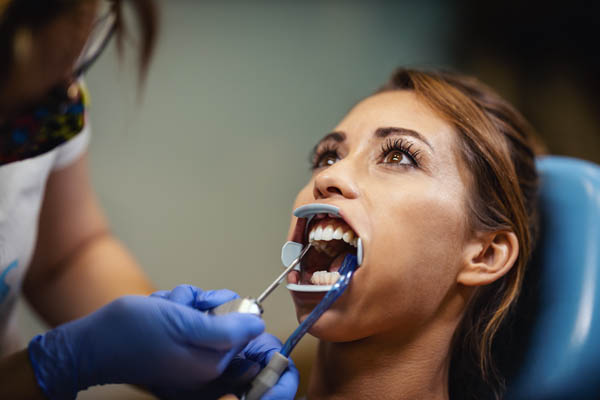How Is Dental Bonding Used in Cosmetic Dentistry?

Dental bonding has a variety of uses in cosmetic dentistry, and it is one of the more affordable ways to improve the appearance of a person's teeth. These treatments involve applying a putty-like composite directly to teeth being restored. These composites are color-matched with the person's real teeth so repairs made blend in.
How dental bonding works
Also known as composite bonding, the composites used for the treatment are mixtures of glass and composite. Below are some issues that dental bonding is often used to fix:
- Gaps between teeth: a composite resin can be used to close up small gaps between teeth. The composite is inserted into the hole and shaped so it looks like the two teeth next to the gap are right next to each other.
- Deformed teeth: composites can be used to fix various deformities of teeth. The composite can be shaped as desired after being applied to create the appearance the patient wants.
- Chipped or broken teeth: composites can be used to fix minor chips and breaks. More severe damage to a tooth might require a dental crown.
- Stained or discolored teeth: teeth whitening treatments are the standard way to improve the color of teeth, but some stains–like those caused by fluorosis–do not respond to the bleaching agents used. Such stains can be covered up with a composite to create the appearance of whiter teeth.
- Tooth decay: silver amalgam fillings were once the go-to solution for cavities, but studies that reveal mercury as toxic has changed this. Composite fillings are a more popular option nowadays. They are safe for patients, and the color of the filling blends in with the color of teeth repaired.
The process
Composite bonding is one of the least invasive treatments used in cosmetic dentistry and it does not require the removal of enamel. The dentist simply uses an etching solution to roughen up the tooth so the composite adheres to it better. It is a reversible treatment, so the patient can still explore other treatment options like crowns and veneers in the future. Local anesthetics are usually not used during the application of composites unless the treatment is being used to fill cavities.
Once the etching solution has dried up, the dentist will start applying composites to the tooth layer by layer. Each layer is shaped as desired before being hardened with a curing light. The process is repeated over and over until the desired look is achieved.
There is no recovery period after getting a tooth restored with dental bonding. Patients are advised to avoid eating or drinking things that stain teeth, like coffee, for the first few days after treatment. Composites are more susceptible to staining than real teeth.
Restore your teeth with dental bonding
Composite bonding gives you a non-invasive way to improve the aesthetics of your teeth. It gives you instant results, so you walk out of the clinic with your smile restored. Call or visit our Conway clinic to set up an appointment.
Request an appointment here: https://www.adlongdental.com or call Adlong Dental at (501) 406-0782 for an appointment in our Conway office.
Related Posts
If you have gapped teeth, dental bonding can be an option to restore your smile. It is a cosmetic dental procedure that uses composite resin materials to transform the teeth’s appearance. Dental bonding can correct not only small spaces between teeth but also other flaws like discoloration and minor tooth decay, cracks, or chips. It…
Dental bonding is an efficient way to restore the appearance and function of teeth. Your cosmetic dentist can use this to repair any damage, discoloration, or decay. Cracked, chipped, broken, or stained teeth can look new. This type of treatment can also close gaps between teeth. If you want to know how dental bonding works…
Many patients want to improve their smiles — this is where a cosmetic dentist can help. Read on to learn how cosmetic dentistry can improve the look of your smile. Cosmetic dentistry focuses on the quality of the smile, while also addressing oral health and functional concerns as necessary.The primary focus of cosmetic dentistry is…
Cosmetic dentistry includes a range of services that improve the person’s smile by addressing cosmetic imperfections with the teeth, gums, jaw alignment, and more. It is helpful to have a good understanding of the more common services that are generally offered by cosmetic dentistry practices to determine if treatment is right for your needs.Every cosmetic…
